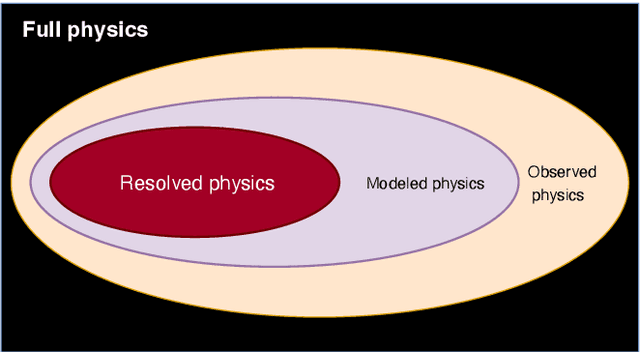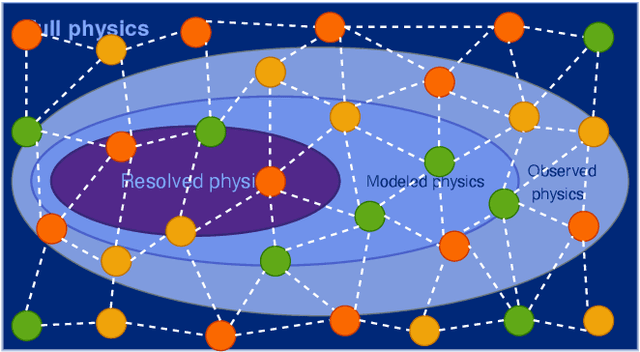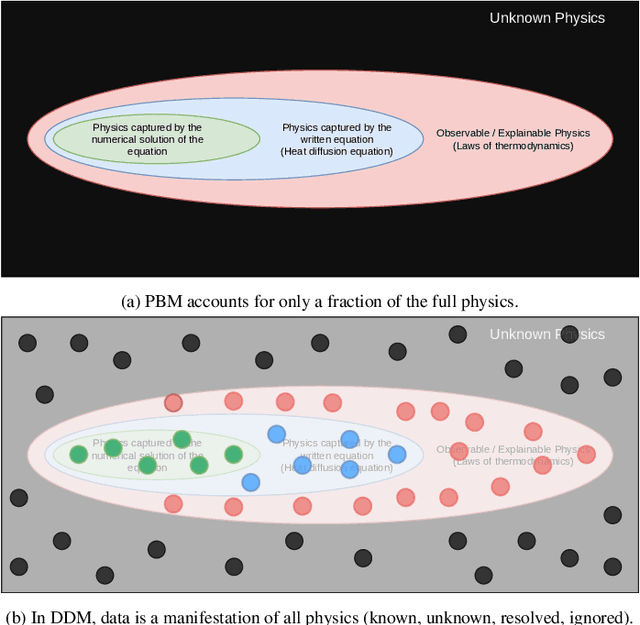Sindre Stenen Blakseth
Combining physics-based and data-driven techniques for reliable hybrid analysis and modeling using the corrective source term approach
Jun 07, 2022



Abstract:Upcoming technologies like digital twins, autonomous, and artificial intelligent systems involving safety-critical applications require models which are accurate, interpretable, computationally efficient, and generalizable. Unfortunately, the two most commonly used modeling approaches, physics-based modeling (PBM) and data-driven modeling (DDM) fail to satisfy all these requirements. In the current work, we demonstrate how a hybrid approach combining the best of PBM and DDM can result in models which can outperform them both. We do so by combining partial differential equations based on first principles describing partially known physics with a black box DDM, in this case, a deep neural network model compensating for the unknown physics. First, we present a mathematical argument for why this approach should work and then apply the hybrid approach to model two dimensional heat diffusion problem with an unknown source term. The result demonstrates the method's superior performance in terms of accuracy, and generalizability. Additionally, it is shown how the DDM part can be interpreted within the hybrid framework to make the overall approach reliable.
Deep neural network enabled corrective source term approach to hybrid analysis and modeling
May 24, 2021



Abstract:Hybrid Analysis and Modeling (HAM) is an emerging modeling paradigm which aims to combine physics-based modeling (PBM) and data-driven modeling (DDM) to create generalizable, trustworthy, accurate, computationally efficient and self-evolving models. Here, we introduce, justify and demonstrate a novel approach to HAM -- the Corrective Source Term Approach (CoSTA) -- which augments the governing equation of a PBM model with a corrective source term generated by a deep neural network (DNN). In a series of numerical experiments on one-dimensional heat diffusion, CoSTA is generally found to outperform comparable DDM and PBM models in terms of accuracy -- often reducing predictive errors by several orders of magnitude -- while also generalizing better than pure DDM. Due to its flexible but solid theoretical foundation, CoSTA provides a modular framework for leveraging novel developments within both PBM and DDM, and due to the interpretability of the DNN-generated source term within the PBM paradigm, CoSTA can be a potential door-opener for data-driven techniques to enter high-stakes applications previously reserved for pure PBM.
 Add to Chrome
Add to Chrome Add to Firefox
Add to Firefox Add to Edge
Add to Edge